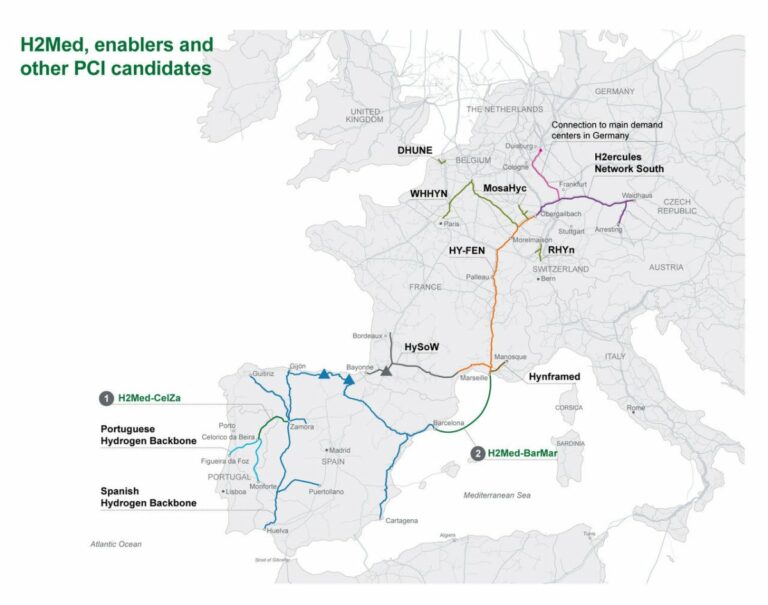Spain Advances on Europe's First Green Hydrogen Corridor
Key Ideas
- Enagás receives preliminary approval to develop the Spanish section of H2Med, Europe's major green hydrogen corridor.
- The H2Med project aims to connect hydrogen networks across the Iberian Peninsula, France, Germany, and North-West Europe by 2030.
- The project involves a €2.5 billion investment and has gained support from Spain, France, Portugal, and Germany.
- Enagás, GRTgaz, Teréga, and OGE are collaborating on the development of hydrogen infrastructure, including subsea pipelines and underground storage facilities.
Enagás Infraestructuras de Hidrógeno, a unit of Spanish gas grid operator Enagás, has been given provisional approval by the Spanish government to commence the development of the Spanish segment of H2Med, Europe's pioneering green hydrogen corridor. This initiative, part of the European Projects of Common Interest (EPCI), involves the establishment of hydrogen networks connecting the Iberian Peninsula to France, Germany, and North-West Europe. The ultimate objective is to facilitate the distribution of affordable renewable hydrogen throughout Europe by 2030. The project includes the CelZa interconnection between Portugal and Spain and the BarMar subsea pipeline linking Spain to France. Launched in 2022 with a budget of €2.5 billion and supported by Spain, France, Portugal, and Germany, the H2Med project has made significant progress, with contracts for engineering and environmental studies awarded and a joint development agreement signed. Enagás, along with partners GRTgaz, Teréga, and OGE, is actively engaged in constructing essential hydrogen infrastructure, such as subsea pipelines and underground storage facilities, to advance the development of the hydrogen corridor.
